Collaborative Concept Map
This page provides a collaborative concept map that accepts contributions from researchers and practitioners. The users may access the entire up-to-date database in the workbook available below. The concept map is illustrated on this page, as well as its partial views to enhance understandability. The original proposition of this concept map is provided in the paper “A concept map to support the planning and evaluation of artifacts in the initial phases of PSS design”. The original paper and its respective workbook are provided as open-access at https://doi.org/10.1007/s00163-021-00358-9.
If you wish to contribute to our Collaborative Concept Map, scroll down to the end of this page and send us an e-mail with your suggestion.
If you have questions regarding the methodology for obtaining the map below, please refer to the original paper or feel free to e-mail us.
The user may find below a full representation of the concept map. Since it is very complex to visualize, we provide 8 partial views to illustrate it clearer. All views (complete and partial) were created in the open software yED in .gml format. You may download the full representation view in the link below and use yED to visualize and edit it.
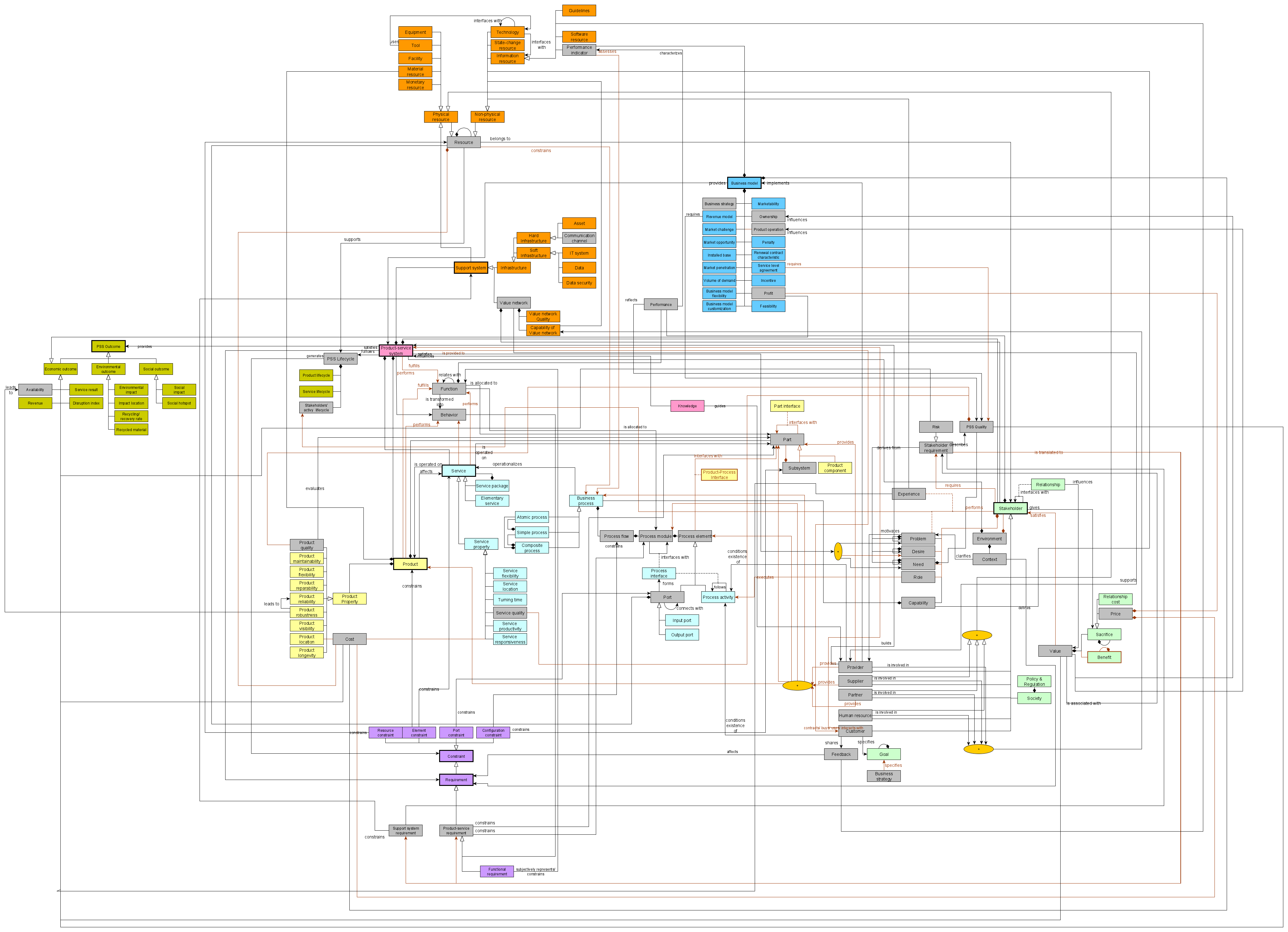

The partial views are presented below. Each view concentrates on the connections of a specific concept. For example, the first partial view presents concepts that are directly connected to the concept “Product-service system.” In each view, the concept where the focus lies is highlighted with a thicker black border. Since the figures represent partial views of the concept map, a concept illustrated in a view may have some of its relationships omitted to enhance visualization. We employed a color schematic to identify which concepts have all their direct relationships depicted in that specific view (white boxes) or do not (gray boxes). Concepts are only highlighted in gray in the views when one or more of their direct relationships are omitted. Furthermore, all concepts and relationships added during completeness verification (i.e., through analysis of retrospective case studies described in section 3.4 of the original paper) were highlighted in brown borders. The views employ the UML notation for class diagrams. It is possible to access a complete glossary for the concepts in the workbook provided in the beginning of this page. The first partial (figure below) portrays the concepts directly connected to Product-service system in the concept map.

The second partial view depicts the concepts directly connected to Product in the concept map.

The third partial view depicts the concepts directly connected to Service.
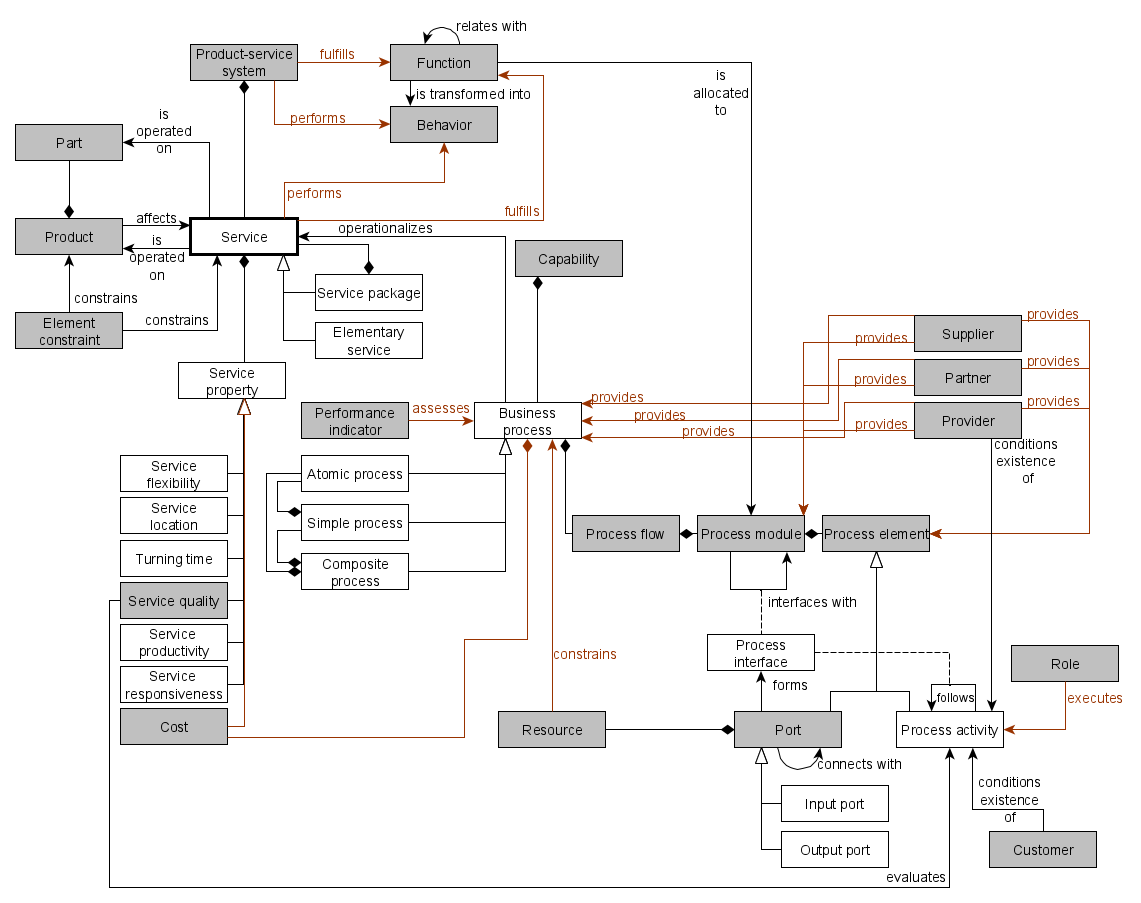
The fourth partial view represents de concepts that are directly connected to Support-system.
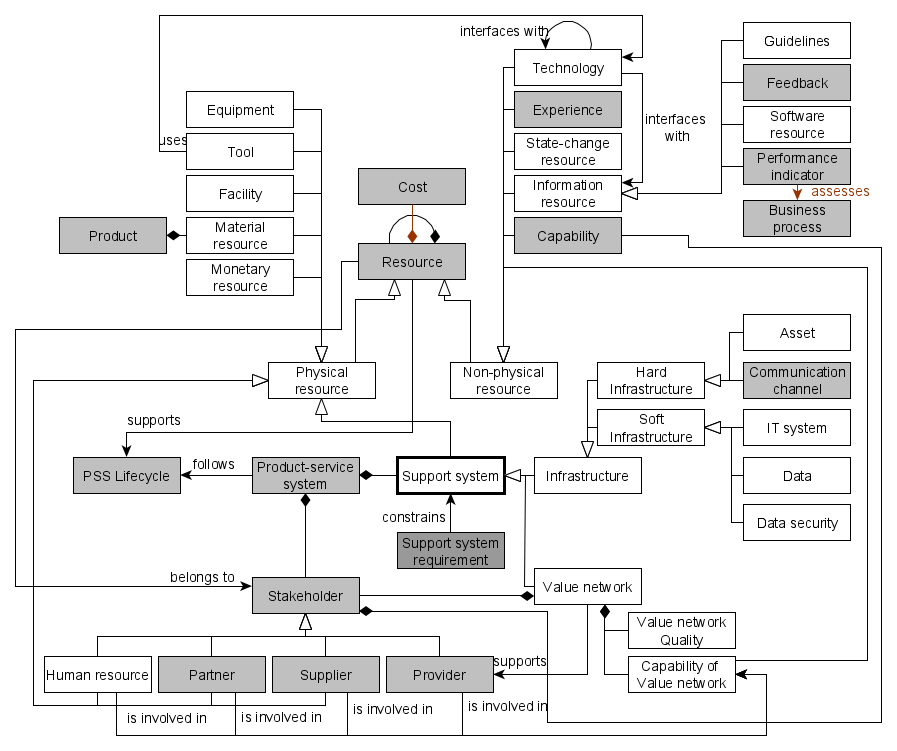
The fifth partial view illustrates all concepts directly connected to Stakeholders.
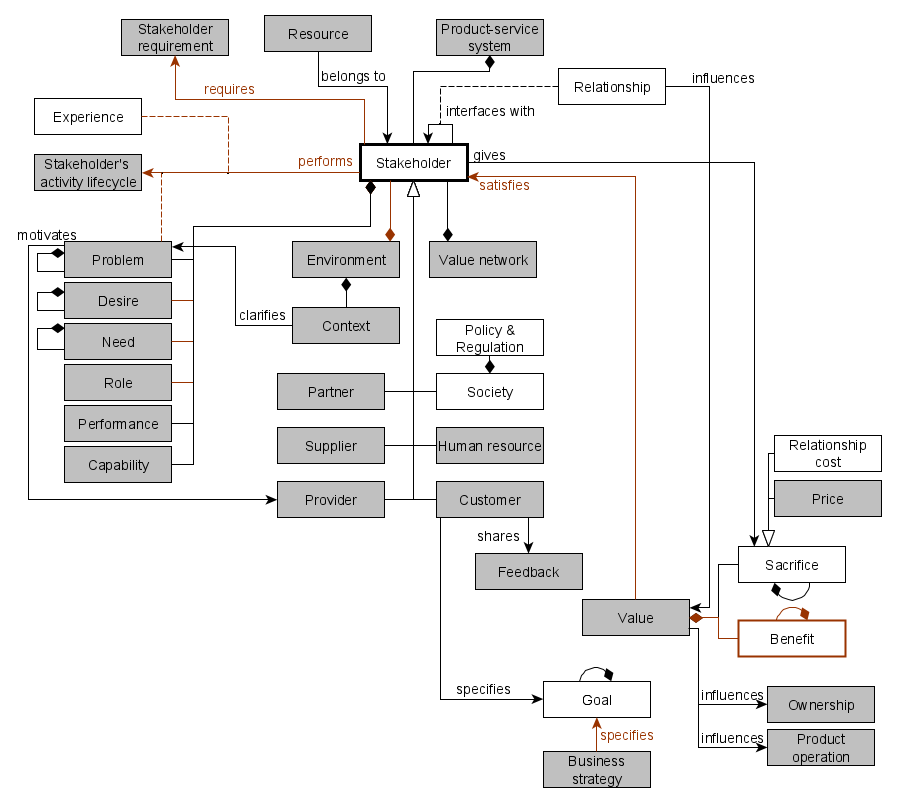
The sixth view depicts all concepts connected with Business Model.
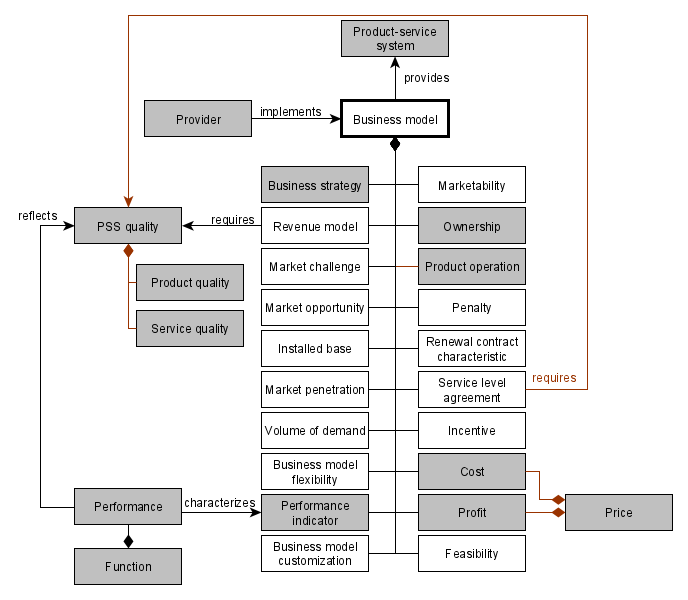
The seventh partial view describes all concepts directly connected to Constraints and Requirements.

Finally, the eighth partial view depicts all concepts directly connected to PSS Outcome.

To provide your contribution to the Collaborative Concept Map or if you have questions about it, send your suggestions or questions by clicking the link below.
